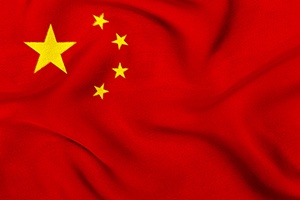 After our series on tariffs and trade wars, one topic remains that doesn’t really fit into that discussion: China and technology. One of the very real issues that often comes up in trade talks is what the U.S. can or should do about the fact that China is making a deliberate attempt, by hook or by crook, to acquire technology that it can use to compete with the U.S. Surely, this problem has to be considered when we look at trade.
After our series on tariffs and trade wars, one topic remains that doesn’t really fit into that discussion: China and technology. One of the very real issues that often comes up in trade talks is what the U.S. can or should do about the fact that China is making a deliberate attempt, by hook or by crook, to acquire technology that it can use to compete with the U.S. Surely, this problem has to be considered when we look at trade.
Technology transfer
Indeed, this is a very real problem, but it is not a new one. It is also not exactly the problem that is being presented. Let me provide some context here.
Technology transfer—to use a fairly neutral term—comes in three forms. The first is basic and applied research in universities, which China has scaled up immensely. Fair enough. It has also sent students abroad and then enticed them back to China. Again, fair enough. The rest of the world benefits from more scientists and engineers, and education is designed as an open system.
The second form of technology transfer is out-and-out espionage, where hackers and spies steal information. This is something we should and do fight. But this problem isn’t new, it certainly isn’t just China, and, perhaps most important, it has nothing to do with trade. Tying this into trade issues simply doesn’t make a lot of sense. It has always gone on and always will—and doesn’t really affect trade relations in any direct way.
The third form, and the one that does relate to trade issues, is technology transfer from Western firms doing business in China. This is, perhaps, where something should and can be done. But, even here, the picture is a bit more complex than it looks.
The business perspective
All of the tech transfer has been voluntary. Yes, China put conditions in place requiring that transfer, but companies made the choice that doing business in China was worth it. In other words, much of the damage that has been done has been due to deliberate choices by Western companies that sharing their technical knowledge was worth the access to the Chinese market.
You can argue (and many do) that companies made a big mistake in doing that. Many companies would agree and are much less willing to make deals like that today. This is the problem we now face. China has indeed taken advantage, in many ways, to acquire technical knowledge. From a business perspective, however, it was largely done through arm's-length deals (i.e., through open trade).
The long-term costs
It was not clear at the time, however, that the long-term costs would be as big as they are. It also wasn’t clear—and still isn’t—who was better placed to make that decision than the companies themselves. How should companies have weighed the immediate advantages to themselves against the longer-term costs to their countries? Can companies even make that decision?
This is where the conjunction between the opportunities and costs from trade is most real. In micro form, it is the problem we face. Any evaluation of future trade policies has to wrestle with the intersection of immediate advantage against long-term costs.
Is governmental oversight the answer?
How can we eliminate or minimize these problems going forward? The current policy has been to let companies operate largely on their own; the new policy seems to be more governmental oversight. Here in the U.S., in Europe, and elsewhere in the world, new barriers and approval processes are being put into place to vet and limit deals with China. Government is taking much more of an oversight role.
Is this a good thing? In some respects, no doubt it is. One thing that strikes me, however, is that this policy takes us away from what has made the U.S. and the West successful over time. In fact, it takes us close to the Chinese model. Further, it does so at a time when China is trying to move closer to the U.S. model.
Two distinct policy discussions
The answer is likely somewhere in between. But even saying that, this problem has nothing to do with tariffs. Putting tariffs on steel, for example, will not materially bring back jobs or stop China from trying to acquire technology. Oversight for the future is different than a stick for the present. These are two very different policy discussions. While they do intersect, they are not the same thing.


 Print
Print

